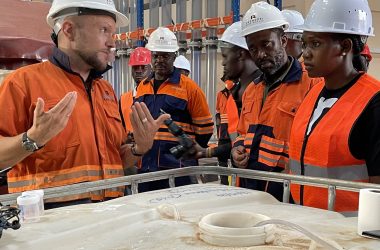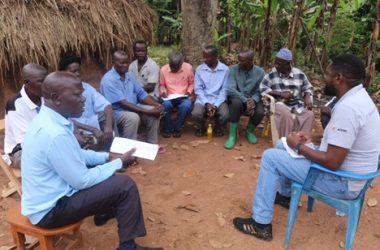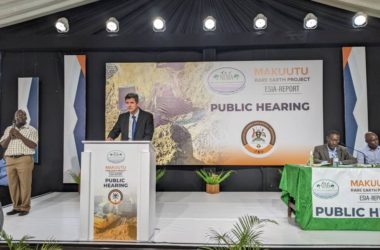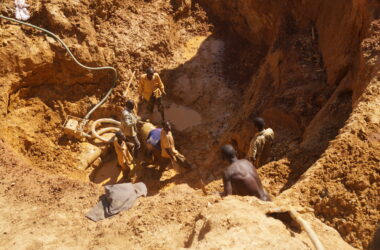I have had the opportunity of reading the Baseline Assessment of Development Minerals in Uganda Volume I and The Baseline Assessment of Development Minerals in Uganda Volume II (Markets study and value chain analysis) both released in March 2018;it is very commendable work, but it totally missed the mark on its analysis of the stone quarrying industry in Uganda. The studies focused on the small scale hand crushers in the stone quarrying business totally ignoring the mechanized stone quarry operators whose value chain can equally benefit from the policy recommendations of these baseline assessments.
The baseline studies named above were commissioned by ACP-EU which is an Afro–Caribbean & Pacific group of states’ initiative with support from the European Union development minerals programme and implemented by UNDP. The project is an attempt to build a body of work to help manage, improve the extraction and exploitation of development minerals among member states, Uganda being one such state. According to the study, Development Minerals are minerals and materials that are mined, processed, manufactured and used domestically in industries such as construction, manufacturing, infrastructure and agriculture. Among the development minerals identified by the study, which covered 22 districts of Uganda are sand, clay, marble, kaolin, dimension stone and sources of stone aggregate; my interest is in the latter two minerals in part because I am involved in the stone quarrying industry but on this occasion I will limit myself to mechanized stone quarrying.
My interest on the subject is informed by an accident of birth into a family that owns and runs a stone quarrying business and I have actively participated in the running and management of the said stone quarrying business for the most part of my adult life; it is fair to state that I am a ‘quasi-subject matter expert’ on stone quarrying in the Ugandan context.
Admittedly the stone quarrying industry in Uganda is poorly documented but not severely undocumented like certain parts of Volume I of the baseline assessment suggests, Infact the earliest documented mechanized stone quarrying operation in Uganda dates as far back as 1905. All mechanized stone quarry operators in Uganda operate under a body called Uganda Stone Quarry Operators Association which is headquarted in Kampala. Another custodian of mechanized stone quarry operators’ data base is the National Environmental Management Authority. Mine here is to attempt to shed light on the operations of mechanized stone quarry operators in Uganda such that the industry can benefit from any reforms that may accrue from the policy recommendations of the baseline studies above; I will provide a snapshot of the business.
To the best of my recollection (which is not accurate), by the year 2012 there were 116 registered companies in Uganda carrying on the business of stone quarrying that were also paid up members of the Uganda Stone Quarry Operators Association. A peculiar statistic at the time for me was the fact that less than 15 companies of the 116 were Ugandan owned with the rest being foreign; It is my strong belief that there are now more than 120 registered companies in Uganda engaged in the business of stone quarrying.
To contextualize the stone quarrying business I will now proceed to give an overview of the processes a startup company goes through to be able to engage in commercial stone quarrying in Uganda.
The first step involves the identification of a rock deposit of commercial quality, sufficient quantity suitable for the Ugandan construction market. This can be done by enlisting the services of a geologist to carry out a reconnaissance and detailed survey of the identified rock deposit. This is usually followed up by acquisition of the rock deposit by negotiating a fair market value with the land owner, who in almost all cases are individuals or communities. A formal transfer of ownership is then done in instances where a certificate of title is available or one is processed in the event that one is absent.
This should be followed up by conducting an Environmental Impact Assessment of the proposed stone quarrying business on the surrounding area and communities; this is done in conjunction with the District Environmental Officer of the area where the proposed business is going to locate. At this point one is also advised to register with Uganda Stone Quarry Operators Association who upon payment of the requisite registration fees and the annual membership fees shall issue a recommendation and letter of introduction. When NEMA approves the EIA and the applicant has paid the requisite fees, the authority will issue an environmental permit detailing the scope of the quarrying operations and urging the holder to religiously abide by the terms and conditions contained therein.
At this point authorization has to be sought from the General Security Officer who sits at the Ministry Of Internal affairs, who will in turn visit the site with his committee on a fact finding mission to establish the suitability of the location for conducting blasting operations.
Once this is all cleared up and approved, the company can then enlist the services of a blaster (explosives expert) who will assess the quantity of explosives required to conduct a blast at the site; the blaster will prepare an invoice which is issued to private commercial dealers in explosives, and after paying the invoiced amount a receipt is then issued with a release order of the required explosives material. All explosive used in commercial quarrying are interned at a military facility in Iganga in Eastern Uganda, where an agent of the company that is a paid up member of the stone quarry association presents the proof of payment and a release order of the said materials, which are then released into the custody of Uganda Police personnel to escort to the blast site.
Back at the blast site it is required that the district security organs are notified of the intended blast; the blast radius is secured and evacuated before the blast can be conducted. Once the blast is done, the blasted material forms the raw material that is fed into the stone crushing machines to produce the machine crushed aggregate in three or four principle sizes.
The process I have attempted to describe above is the practice in the industry and is not governed by any legal framework which makes the industry vulnerable to unfair practices and abuse without any recourse to clear legal remedies. Since the objective of the baseline studies mentioned here is to develop a database of the relevant information and provide policy recommendations on how the extractive minerals industry can be reformed, it is my considered opinion that the mechanized stone quarrying industry can benefit from such reforms.






